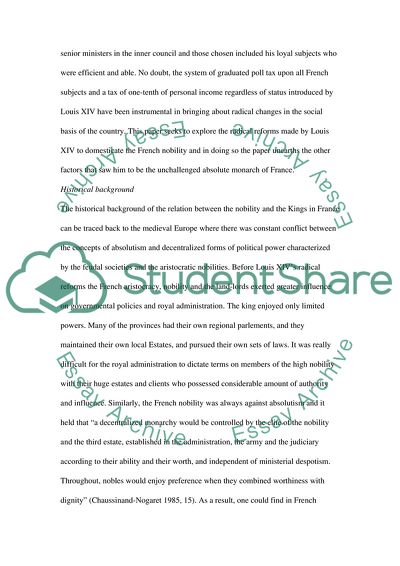Cite this document
(Louis XIV and the Domestication of the Nobility Essay, n.d.)
Louis XIV and the Domestication of the Nobility Essay. Retrieved from https://studentshare.org/history/1734900-louis-xiv-and-the-domestication-of-the-nobility
Louis XIV and the Domestication of the Nobility Essay. Retrieved from https://studentshare.org/history/1734900-louis-xiv-and-the-domestication-of-the-nobility
(Louis XIV and the Domestication of the Nobility Essay)
Louis XIV and the Domestication of the Nobility Essay. https://studentshare.org/history/1734900-louis-xiv-and-the-domestication-of-the-nobility.
Louis XIV and the Domestication of the Nobility Essay. https://studentshare.org/history/1734900-louis-xiv-and-the-domestication-of-the-nobility.
“Louis XIV and the Domestication of the Nobility Essay”, n.d. https://studentshare.org/history/1734900-louis-xiv-and-the-domestication-of-the-nobility.


